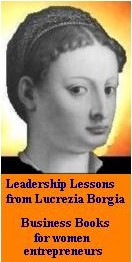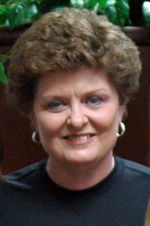|




|
Women's College Basketball Standard Bearer: A BIOGRAPHY OF PAT HEAD SUMMITT
|
In the pages below you will read a biography of Pat Summitt, the all-time winningest coach in Women's College Basketball.
The biography also includes selected info about women's basketball and other coaches. You'll see a color code below to help you sort out what's what.
|
|
|
Color coding
Pat Summitt biography
Contemporary coaches and players |
National championships
Coach/player awards |

Pat and her son Tyler celebrate Championship #7 |
Pat Summitt was born Patricia Sue Head on June 14, 1952 in Clarksville, Tennessee to Richard and Hazel. She would get her height (5 ft 11) from her father, who was 6 ft 5, along with other qualities such as stubborness and determination.
She has three older brothers: Tommy, Charles and Kenneth, and a younger sister, Linda.
CHILDHOOD
Pat Head grew up on a farm in Clarksville, Tennessee along with her three brothers and younger sister. As a baby she grew up in a two-room log cabin (which no longer exists).
Her father, Richard Head, was a severe man, who whipped his children when they broke any of his rules. "While I loved and respected my father, I also feared him," she said in her book Reach For The Summitt, (1998) (a book on motivation, with biographical highlights.) |
He would go for days without speaking...Summitt speculates that this behavior came from exhaustion "He built up his own dairy and tobacco farm out of nothing. He and my mother...started out working a small plot of leased land
For just forty dollars a month. When I tell you they worked, I mean they worked, backbreaking hard."
| As the years passed her father - with the assistance of his wife and children - built up a thousand-acre farm. Then he purchased a general store, opened a hardware store, a feed mill, a gas pump and a laundry. He also entered the construction business.
For many years, however, they lived from crop to crop. They were cash poor -"except when the tobacco came in." The roads in the area were mostly unpaved at the time, and Pat would travel from place to place on a pony named Billy.
"All we did with our days was go to school, go to our Methodist church, and work the fields. We had to make up our own fun - what little my father permitted."
Richard Head's discipline was such that Pat did not have an "untroubled relationship" with him, but she does say that, in the end, she was grateful for his peculiar combination of love and discipline. |
|
Richard Head did support her desire to play basketball - he built a basketball court on top of the hayloft, and strung lights so they could play at night. (Although more than likely he mainly did this for the boys, who could parlay their inherited height and basketball skills into scholarships.)
HIGH SCHOOL
Pat was five foot 9 in the third grade. When she reached high-school age, her father moved the household across the county line - six miles - to Henrietta, so that she could play basketball, because the school she?d been assigned to in Clarksville didn?t have a team for girls.
RESPECT AND THE ROLE OF WOMEN
| As she got older, Pat says, "I understood that women had to fight for respect in more ways than one. It seemed to me that my mother worked as hard or harder than my father and my brothers. At the dinner table, when my brothers would finish their tea, they'd hold up their empty glasses and rattle them. They wouldn't say a word. They'd just lift their glasses, and shake them, until my mother served them. It was their way of saying, "Come fill my glass." ... My mother waited on them. And I thought, That isn't right."
Her brothers did no work around the house. Thy didn't make the beds, work the garden, or mow the lawn. They just worked the farm. Her mother, meanwhile, did the cooking and the ironing and the cleaning, and the milking, and worked the garden, and worked in the store, and in the dry cleaners.
"When my dad got into the house-building business, my mother was the one who painted the houses and laid the carpets. Looking back on it, I don't think anyone in the family worked as hard as my mother or got less credit for it." |
|
In school, because of her height, her nickname was "Bone," and she was teased about it.
|
While Pat Summitt was growing up in Tennessee, women's basketball was also slowly growing. Helping the game to grow was another pioneer, who started a few years earlier than Summitt, Jody Conradt. (She was the first women's basketball coach to reach 700 wins, and established several other firsts, and had many successes, before retiring in 2007.)
Jody Conradt
|
Conradt was born in Goldthwaite, Texas on May 13, 1941. She was a tomboy, and played sports in school. She played six-man basketball, the game in which three defenders stayed under their own basket, and three offensive players stayed under their opponent's basket. This way they wouldn't have to do any running.
Conrad played collegiate basketball at Baylor University in Waco, Texas, while studing for a degee in physical education. She graduated in 1963 and got a job as a coach at Midway High School in Waco, where she taught six-man basketball.
She coached here for three years before becoming head coach at a college, Sam Houston State in Huntsville, Texas. Here, they played the five-man, full-court version of the game. [Next news on Jody Conrad is in 1973]. |

Conradt in media photo, 2000 |
1963
The Division for Girls and Women's Sports joins the US Olympics Development Committee in an effort to show teachers how to train Olympians.
1966
The Commission on Intercollegiate Athletics for Women (CIAW) is founded.
1969
1969 CIAW Championship - 6-player format
West Chester (PA) beat Western Carolina 65-39
Bibliography
Hard Fought Victories: Women Coaches Making a Difference, Sara Gogol, 2002, Wish Publishing.
Extraordinary Women Athletes, Judy L. Hasday, 2000. Children's Press
A History of Basketball for Girls and Women: From Bloomers to the Big Leagues. Joanne Lannin. 2000. Lerner Sports.
Reach For the Summitt, Pat Summitt and Sally Jenkins. 1998. Broadway Books.
Raise the Roof, Pat Summitt and Sally Jenkins. 1998. Broadway Books.
Nike Is A Goddess: The History of Women in Sports. Edited by Lissa Smith. 1998. Atlantic Monthly Press.
|
|


